Ian P. Gent
Breaking the Symmetries of Indistinguishable Objects
Mar 21, 2025Abstract:Indistinguishable objects often occur when modelling problems in constraint programming, as well as in other related paradigms. They occur when objects can be viewed as being drawn from a set of unlabelled objects, and the only operation allowed on them is equality testing. For example, the golfers in the social golfer problem are indistinguishable. If we do label the golfers, then any relabelling of the golfers in one solution gives another valid solution. Therefore, we can regard the symmetric group of size $n$ as acting on a set of $n$ indistinguishable objects. In this paper, we show how we can break the symmetries resulting from indistinguishable objects. We show how symmetries on indistinguishable objects can be defined properly in complex types, for example in a matrix indexed by indistinguishable objects. We then show how the resulting symmetries can be broken correctly. In Essence, a high-level modelling language, indistinguishable objects are encapsulated in "unnamed types". We provide an implementation of complete symmetry breaking for unnamed types in Essence.
Behaviour Planning: A Toolkit for Diverse Planning
May 07, 2024Abstract:Diverse planning is the problem of generating plans with distinct characteristics. This is valuable for many real-world scenarios, including applications related to plan recognition and business process automation. In this work, we introduce \emph{Behaviour Planning}, a diverse planning toolkit that can characterise and generate diverse plans based on modular diversity models. We present a qualitative framework for describing diversity models, a planning approach for generating plans aligned with any given diversity model, and provide a practical implementation of an SMT-based behaviour planner. We showcase how the qualitative approach offered by Behaviour Planning allows it to overcome various challenges faced by previous approaches. Finally, the experimental evaluation shows the effectiveness of Behaviour Planning in generating diverse plans compared to state-of-the-art approaches.
Towards a Model of Puzznic
Oct 02, 2023Abstract:We report on progress in modelling and solving Puzznic, a video game requiring the player to plan sequences of moves to clear a grid by matching blocks. We focus here on levels with no moving blocks. We compare a planning approach and three constraint programming approaches on a small set of benchmark instances. The planning approach is at present superior to the constraint programming approaches, but we outline proposals for improving the constraint models.
Bridging the Gap between Structural and Semantic Similarity in Diverse Planning
Oct 02, 2023Abstract:Diverse planning is the problem of finding multiple plans for a given problem specification, which is at the core of many real-world applications. For example, diverse planning is a critical piece for the efficiency of plan recognition systems when dealing with noisy and missing observations. Providing diverse solutions can also benefit situations where constraints are too expensive or impossible to model. Current diverse planners operate by generating multiple plans and then applying a selection procedure to extract diverse solutions using a similarity metric. Generally, current similarity metrics only consider the structural properties of the given plans. We argue that this approach is a limitation that sometimes prevents such metrics from capturing why two plans differ. In this work, we propose two new domain-independent metrics which are able to capture relevant information on the difference between two given plans from a domain-dependent viewpoint. We showcase their utility in various situations where the currently used metrics fail to capture the similarity between plans, failing to capture some structural symmetries.
Automatic Tabulation in Constraint Models
Feb 26, 2022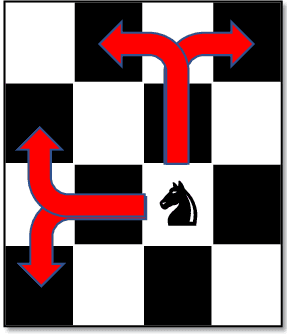
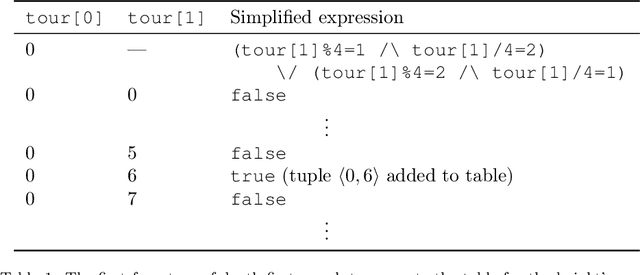


Abstract:The performance of a constraint model can often be improved by converting a subproblem into a single table constraint. In this paper we study heuristics for identifying promising candidate subproblems, where converting the candidate into a table constraint is likely to improve solver performance. We propose a small set of heuristics to identify common cases, such as expressions that will propagate weakly. The process of discovering promising subproblems and tabulating them is entirely automated in the constraint modelling tool Savile Row. Caches are implemented to avoid tabulating equivalent subproblems many times. We give a simple algorithm to generate table constraints directly from a constraint expression in \savilerow. We demonstrate good performance on the benchmark problems used in earlier work on tabulation, and also for several new problem classes. In some cases, the entirely automated process leads to orders of magnitude improvements in solver performance.
Towards Reformulating Essence Specifications for Robustness
Nov 01, 2021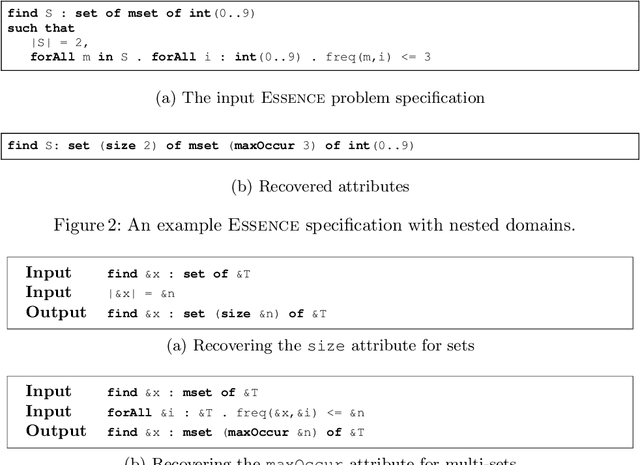
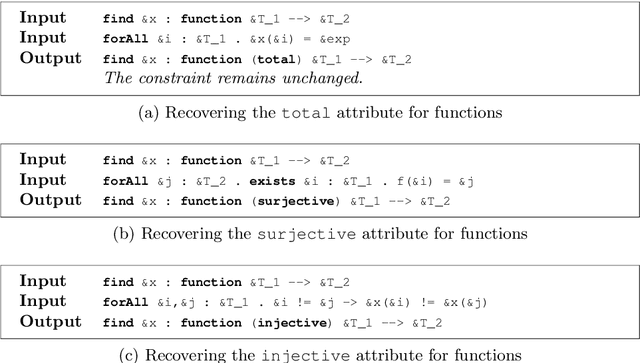
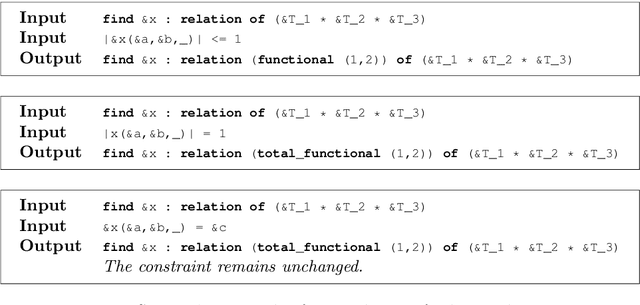

Abstract:The Essence language allows a user to specify a constraint problem at a level of abstraction above that at which constraint modelling decisions are made. Essence specifications are refined into constraint models using the Conjure automated modelling tool, which employs a suite of refinement rules. However, Essence is a rich language in which there are many equivalent ways to specify a given problem. A user may therefore omit the use of domain attributes or abstract types, resulting in fewer refinement rules being applicable and therefore a reduced set of output models from which to select. This paper addresses the problem of recovering this information automatically to increase the robustness of the quality of the output constraint models in the face of variation in the input Essence specification. We present reformulation rules that can change the type of a decision variable or add attributes that shrink its domain. We demonstrate the efficacy of this approach in terms of the quantity and quality of models Conjure can produce from the transformed specification compared with the original.
Using Small MUSes to Explain How to Solve Pen and Paper Puzzles
Apr 30, 2021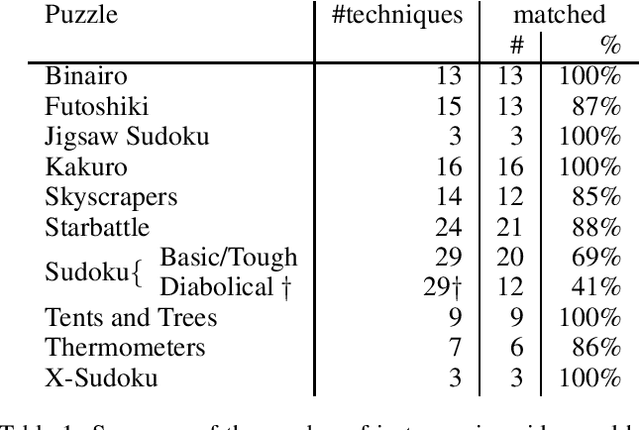
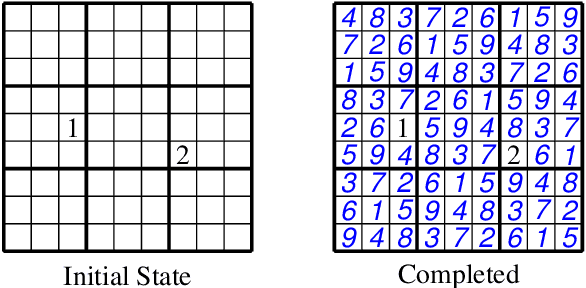
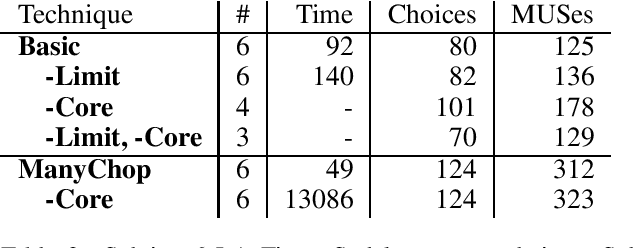
Abstract:Pen and paper puzzles like Sudoku, Futoshiki and Skyscrapers are hugely popular. Solving such puzzles can be a trivial task for modern AI systems. However, most AI systems solve problems using a form of backtracking, while people try to avoid backtracking as much as possible. This means that existing AI systems do not output explanations about their reasoning that are meaningful to people. We present Demystify, a tool which allows puzzles to be expressed in a high-level constraint programming language and uses MUSes to allow us to produce descriptions of steps in the puzzle solving. We give several improvements to the existing techniques for solving puzzles with MUSes, which allow us to solve a range of significantly more complex puzzles and give higher quality explanations. We demonstrate the effectiveness and generality of Demystify by comparing its results to documented strategies for solving a range of pen and paper puzzles by hand, showing that our technique can find many of the same explanations.
The Winnability of Klondike and Many Other Single-Player Card Games
Jun 28, 2019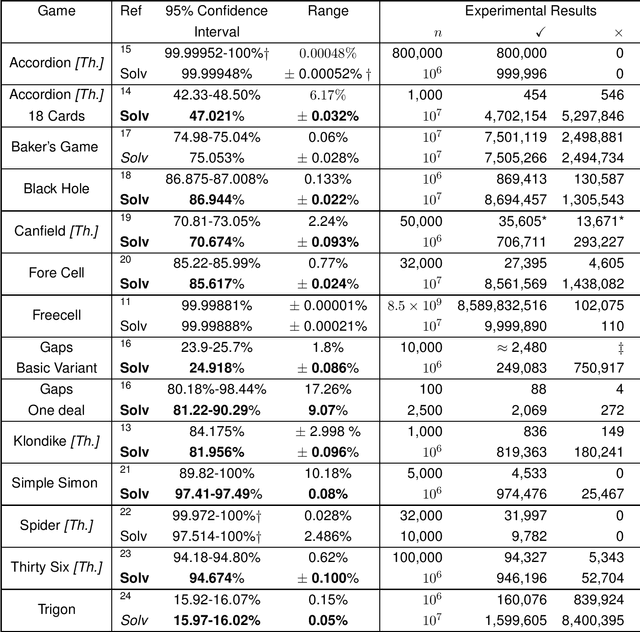

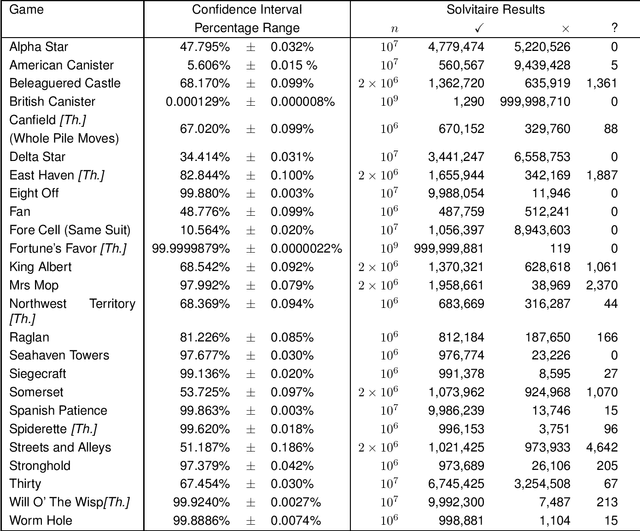
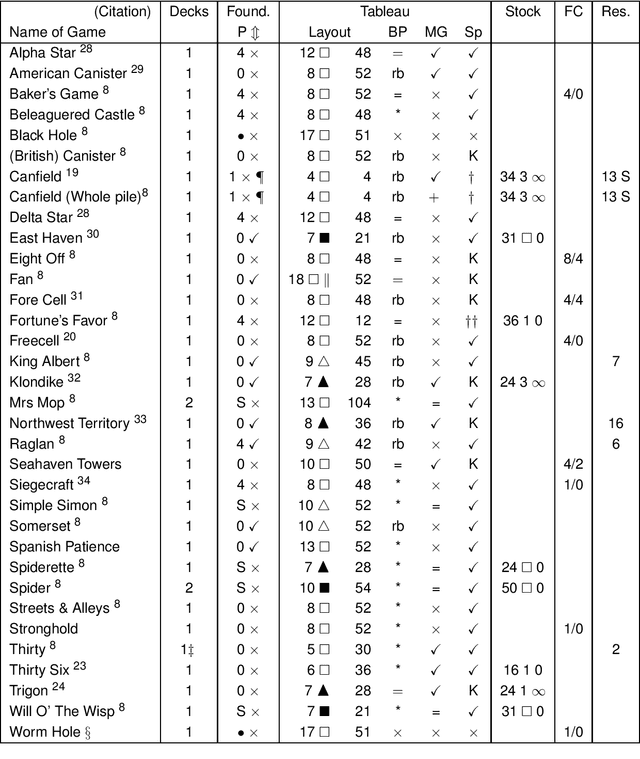
Abstract:The most famous single-player card game is 'Klondike', but our ignorance of its winnability percentage has been called "one of the embarrassments of applied mathematics". Klondike is just one of many single-player card games, generically called 'patience' or 'solitaire' games, for which players have long wanted to know how likely a particular game is to be winnable for a random deal. A number of different games have been studied empirically in the academic literature and by non-academic enthusiasts. Here we show that a single general purpose Artificial Intelligence program, called "Solvitaire", can be used to determine the winnability percentage of approximately 30 different single-player card games with a 95\% confidence interval of +/- 0.1\% or better. For example, we report the winnability of Klondike as 81.956% +/- 0.096% (in the 'thoughtful' variant where the player knows the location of all cards), a 30-fold reduction in confidence interval over the best previous result. Almost all our results are either entirely new or represent significant improvements on previous knowledge.
A Review of Literature on Parallel Constraint Solving
Mar 29, 2018Abstract:As multicore computing is now standard, it seems irresponsible for constraints researchers to ignore the implications of it. Researchers need to address a number of issues to exploit parallelism, such as: investigating which constraint algorithms are amenable to parallelisation; whether to use shared memory or distributed computation; whether to use static or dynamic decomposition; and how to best exploit portfolios and cooperating search. We review the literature, and see that we can sometimes do quite well, some of the time, on some instances, but we are far from a general solution. Yet there seems to be little overall guidance that can be given on how best to exploit multicore computers to speed up constraint solving. We hope at least that this survey will provide useful pointers to future researchers wishing to correct this situation. Under consideration in Theory and Practice of Logic Programming (TPLP).
Generalized Support and Formal Development of Constraint Propagators
May 30, 2016
Abstract:Constraint programming is a family of techniques for solving combinatorial problems, where the problem is modelled as a set of decision variables (typically with finite domains) and a set of constraints that express relations among the decision variables. One key concept in constraint programming is propagation: reasoning on a constraint or set of constraints to derive new facts, typically to remove values from the domains of decision variables. Specialised propagation algorithms (propagators) exist for many classes of constraints. The concept of support is pervasive in the design of propagators. Traditionally, when a domain value ceases to have support, it may be removed because it takes part in no solutions. Arc-consistency algorithms such as AC2001 make use of support in the form of a single domain value. GAC algorithms such as GAC-Schema use a tuple of values to support each literal. We generalize these notions of support in two ways. First, we allow a set of tuples to act as support. Second, the supported object is generalized from a set of literals (GAC-Schema) to an entire constraint or any part of it. We design a methodology for developing correct propagators using generalized support. A constraint is expressed as a family of support properties, which may be proven correct against the formal semantics of the constraint. Using Curry-Howard isomorphism to interpret constructive proofs as programs, we show how to derive correct propagators from the constructive proofs of the support properties. The framework is carefully designed to allow efficient algorithms to be produced. Derived algorithms may make use of dynamic literal triggers or watched literals for efficiency. Finally, two case studies of deriving efficient algorithms are given.
 Add to Chrome
Add to Chrome Add to Firefox
Add to Firefox Add to Edge
Add to Edge